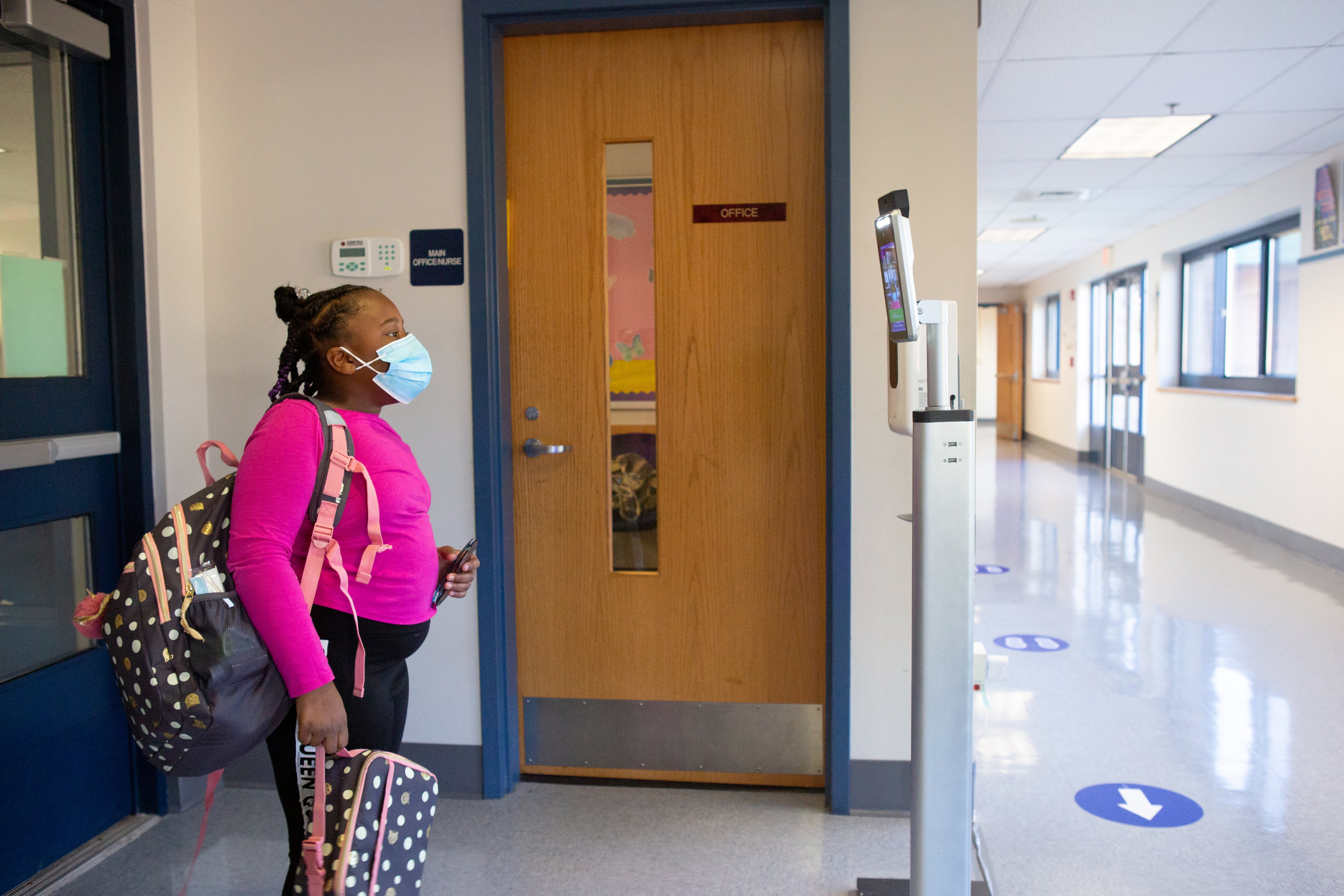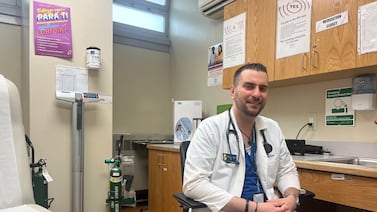Schools can end quarantines and regular screening tests for COVID, but students and staff should keep masks on in areas with high levels of COVID spread, according to guidelines released Thursday by the Centers for Disease Control and Prevention.
The new, more limited recommendations come as districts across the country are starting a new school year — and in many cases reflect decisions to ease up on COVID precautions that schools have already made. Almost no districts are starting the year with a mask mandate, and in-school quarantine rules are on the retreat.
“This latest guidance from the CDC should give our students, parents, and educators the confidence they need to head back to school this year with a sense of joy and optimism,” Secretary of Education Miguel Cardona said in a statement. “While COVID continues to evolve, so has our understanding of the science and what it takes to return to school safely.”
Schools aren’t required to follow these recommendations — states and cities can still set their own rules — and updates to CDC guidance no longer prompt the kind of sweeping policy changes that they did earlier in the pandemic. Still, many districts look to the recommendations.
Chad Golden, a school administrator in Everett, Washington, for example, said last week that his district was waiting for new CDC and state guidance before making any changes to their COVID protocols. Of particular interest, he said, was “any possible adjustments they would make that would impact our student day, like social distancing.”
Here’s what the CDC says now.
No more quarantines
Under the previous CDC guidance, fully vaccinated students didn’t have to quarantine. But federal health officials had advised other students to quarantine for at least five days in a few scenarios.
Now, the CDC says no one in schools needs to quarantine after exposure, though they should wear a mask for 10 days, regardless of vaccination status.
“Administrators can decide how to manage exposures based on the local context and benefits of preserving access to in-person learning,” the guidance says.
Some states and districts have taken a similar approach for months. Still, some school leaders will likely breathe a sigh of relief at the change, as prior quarantine guidelines led to confusion and huge numbers of student and staff absences.
“It’s just so disruptive to schools when they’re struggling with lots of kids that are out,” said Sara Bode, a doctor at Nationwide Children’s Hospital in Columbus, Ohio and chair-elect for the American Academy of Pediatrics’ Council on School Health. “It is really such a benefit to the school itself, to try to maintain some consistency with this in person.”
People who do test positive for COVID should still isolate for at least five days, the updated guidance reads.
Masks still suggested in ‘high risk’ areas
One recommendation the CDC did not drop: indoor masking in high risk level communities. Currently, over 41% of counties qualify as a high-risk zone. (Here’s where you can check your own county.)
Local policies diverge on this point. Only a handful of big districts currently have a mask mandate in place, including Philadelphia and Newark.
Schools “should consider flexible, non-punitive policies and practices to support individuals who choose to wear masks regardless of the COVID-19 Community Level,” the new guidance says.
The guidance also cautions that schools must make accommodations needed for students with disabilities to attend school in person, including requiring others to wear masks in certain instances.
“Students with immunocompromising conditions or other conditions or disabilities that increase risk for getting very sick with COVID-19 should not be placed into separate classrooms or otherwise segregated from other students,” the guidance states.
No more ‘test to stay’
The new guidance says that the practice known as “test to stay” is no longer needed at schools.
The CDC recommended the practice last year as a way to keep students in the classroom after exposure. As long as a student tested negative and showed no symptoms, they could stay in school instead of quarantining.
Test-to-stay was used in a number of districts, including Philadelphia, Chicago, and across Colorado. By the end of last school year, just over a third of public schools were using test-to-stay, according to a recent federal survey. But the practice required lots of rapid tests, making it resource-intensive.
No more regular screening testing
New guidance also says that routine screening testing is no longer recommended in K-12 schools.
But when COVID levels are high in a community, schools can consider using screening tests for students and staff who participate in certain high-risk activities, such as band, choir, theater, and close-contact sports. Schools may also want to use screening tests before or after big events, like prom, school trips, or school breaks.
And schools that serve students who are at higher risk of getting severely ill from the virus — such as students who have complex medical needs — may want to use screening testing when COVID spread in the community is medium or high, the guidance says.
Some districts have routinely tested students and staff to detect asymptomatic COVID cases. Last year, the Biden administration gave schools billions of dollars to run these kinds of programs.
But in general, in-school testing programs are waning. New York City is planning to end its weekly random testing program. In Chicago Public Schools, fewer than 5% of students in summer programs had consented to COVID-19 testing as of July 5.
Detroit’s school district was requiring universal testing for all employees and students, but this fall, the district will only test a random pool of 10% to 20% of the district’s population each week.
Continued push to improve ventilation
The CDC’s new general COVID guidance continues to acknowledge social distancing can help stop the spread of the virus, but says use of that strategy should depend on the setting, COVID levels in the community, and the quality of air ventilation.
Many districts had already dropped social distancing requirements or announced plans to do so this school year. Los Angeles schools said they would still follow social distancing protocols “to the extent possible,” while others, like Fort Bend schools in Texas, said they’d return to keeping three feet of distance if COVID cases spiked in the community.
The CDC is continuing to emphasize the importance of improving ventilation.
Districts across the country have been upgrading ventilation since the pandemic began. It’s become a top spending priority for many school officials: A recent review of some 5,000 district spending plans found leaders expected to spend nearly $6 billion in federal COVID funds to improve heating, ventilation, and cooling systems. The issue is particularly pressing for districts like Detroit and Newark that have aging buildings or other longstanding facilities issues.
Kalyn Belsha is a national education reporter based in Chicago. Contact her at kbelsha@chalkbeat.org.
Jessica Blake is a summer reporting intern for the Chalkbeat national desk. Contact her at jblake@chalkbeat.org or on Twitter at @JessicaEBlake.






